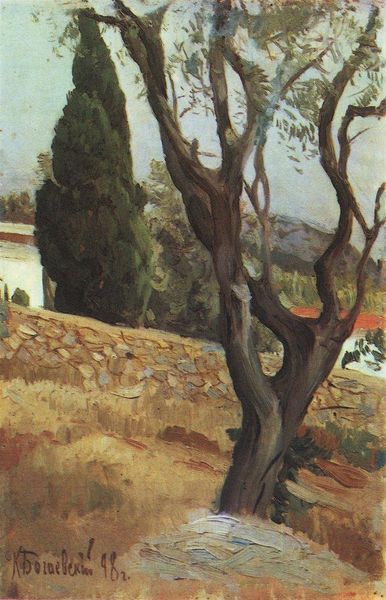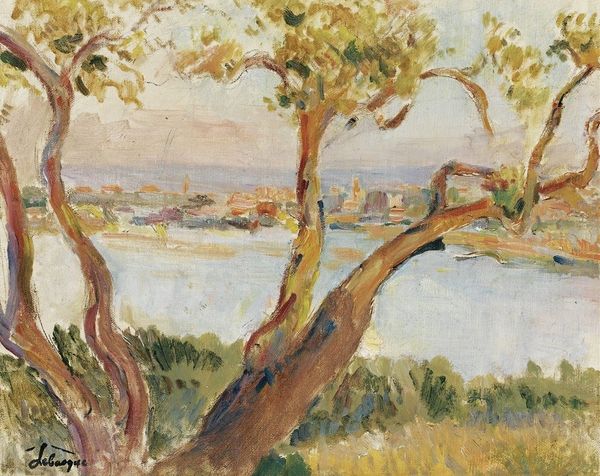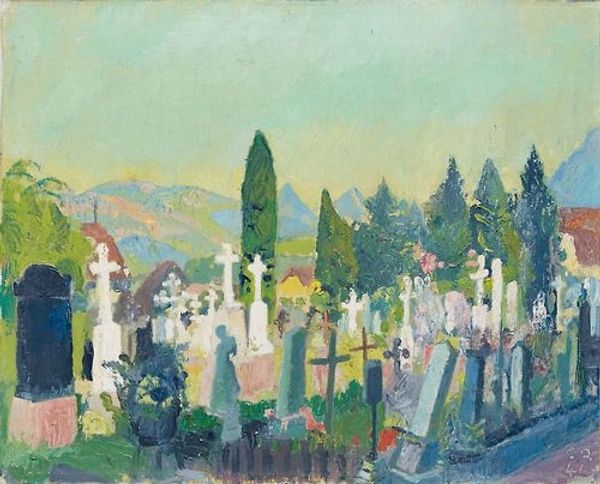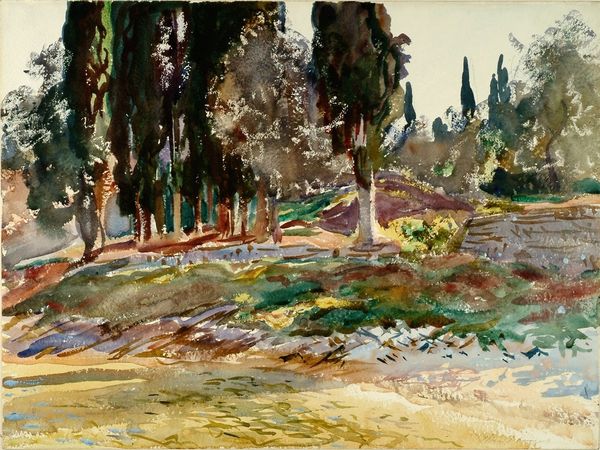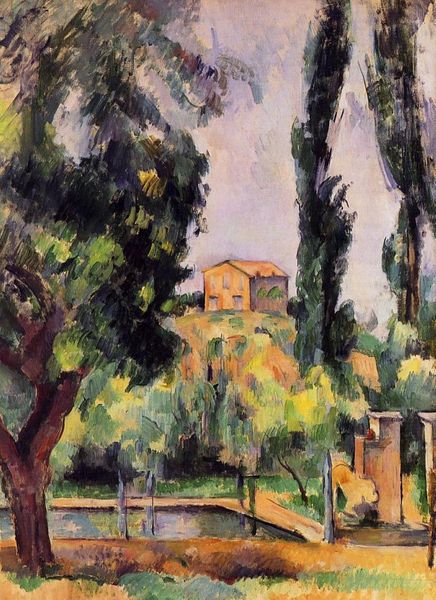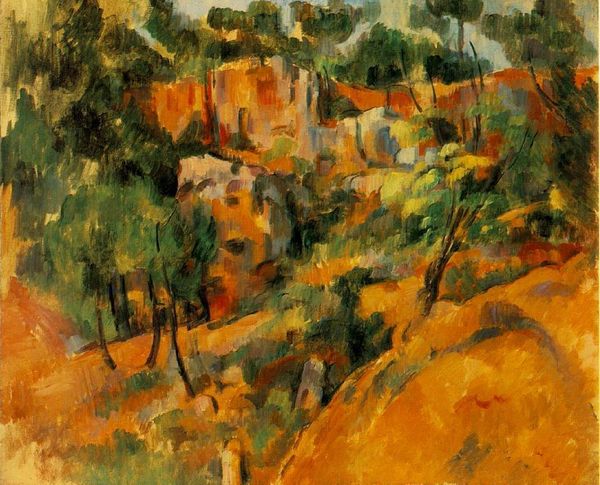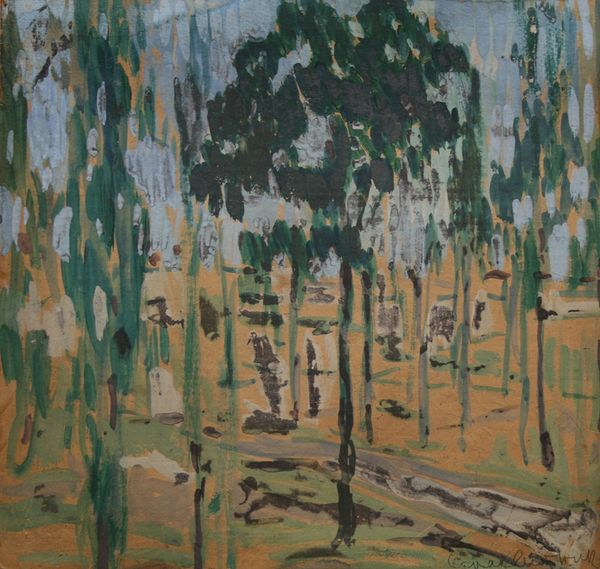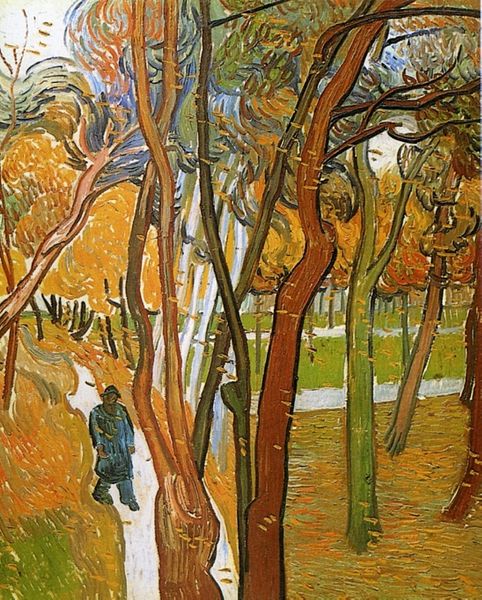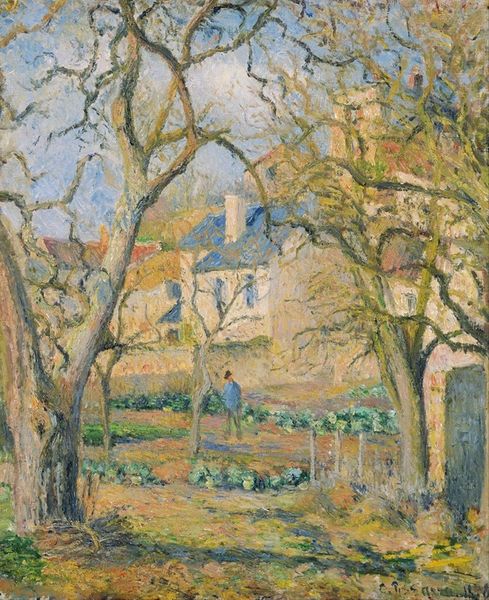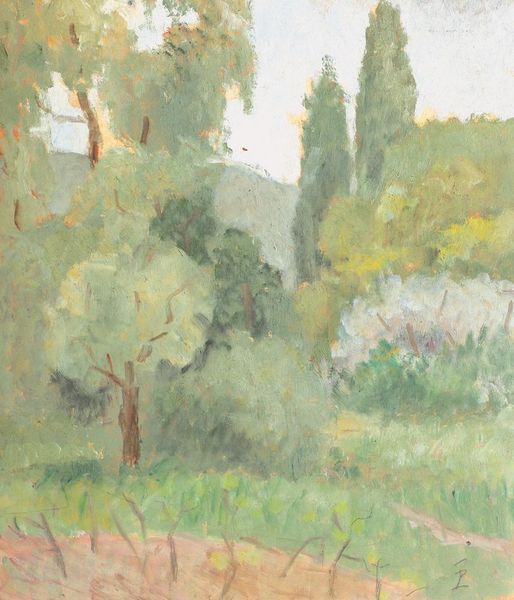
plein-air, oil-paint
#
tree
#
impressionism
#
impressionist painting style
#
plein-air
#
oil-paint
#
landscape
#
impressionist landscape
#
oil painting
#
geometric
#
modernism
Copyright: Public domain
Editor: So here we have "Olympia" by Konstantinos Maleas, looks like an oil painting, likely from the early 20th century given the impressionist landscape style. I’m immediately struck by the use of these thick, visible brushstrokes. What’s your interpretation of the piece? Curator: Well, considering Maleas's historical context, particularly within the Greek modernist movement, it's key to look at the *making* of this piece. Notice the visible labor in each brushstroke. He's not just representing a landscape, but almost performing the landscape with his body. The choice of oil-paint, a relatively accessible medium, hints at a broader interest in democratizing art. How might the *plein-air* technique also be meaningful in understanding his methods? Editor: That’s interesting, the democratizing of art through *plein-air*? I hadn’t considered the accessibility of the materials impacting meaning. Being able to go outside and easily engage the environment using less precious materials seems noteworthy. Curator: Exactly. The materiality pushes back against academic art traditions. It also makes the process of creating the artwork an essential, visible element. You see, the medium IS the message; he calls attention to his active process when creating this vista. Does thinking about the artistic labor change your perspective at all? Editor: Yes, it does. I was initially focused on the style, seeing the blocks of white paint as buildings nestled in the grove of trees in a more traditional impressionist view. I now realize how reductive that was. Seeing his labor does provide a totally different point of view. Curator: Indeed! Focusing on process and materiality often unlocks fascinating perspectives. Editor: I will definitely be using this new lens on my next museum visit. Thanks!
Comments
No comments
Be the first to comment and join the conversation on the ultimate creative platform.
